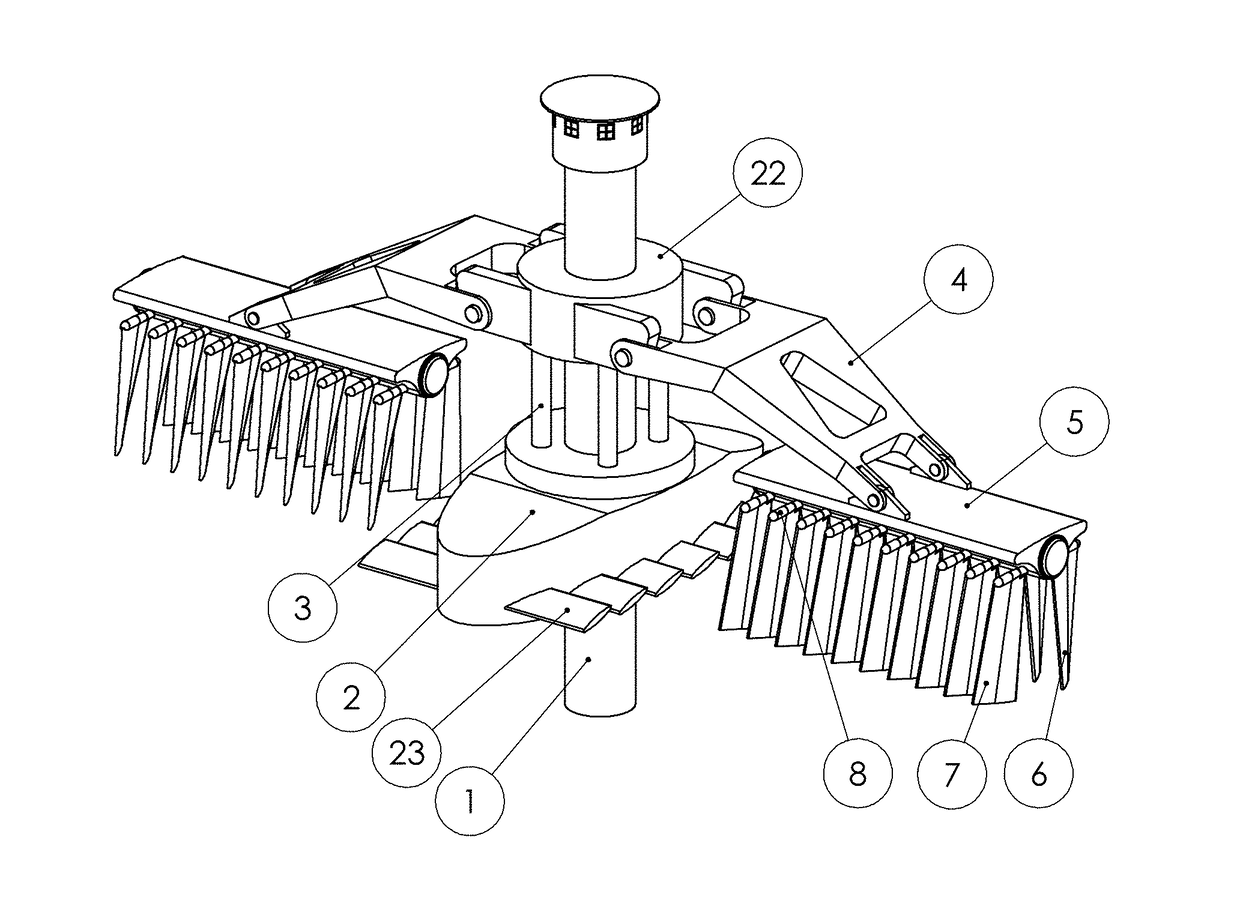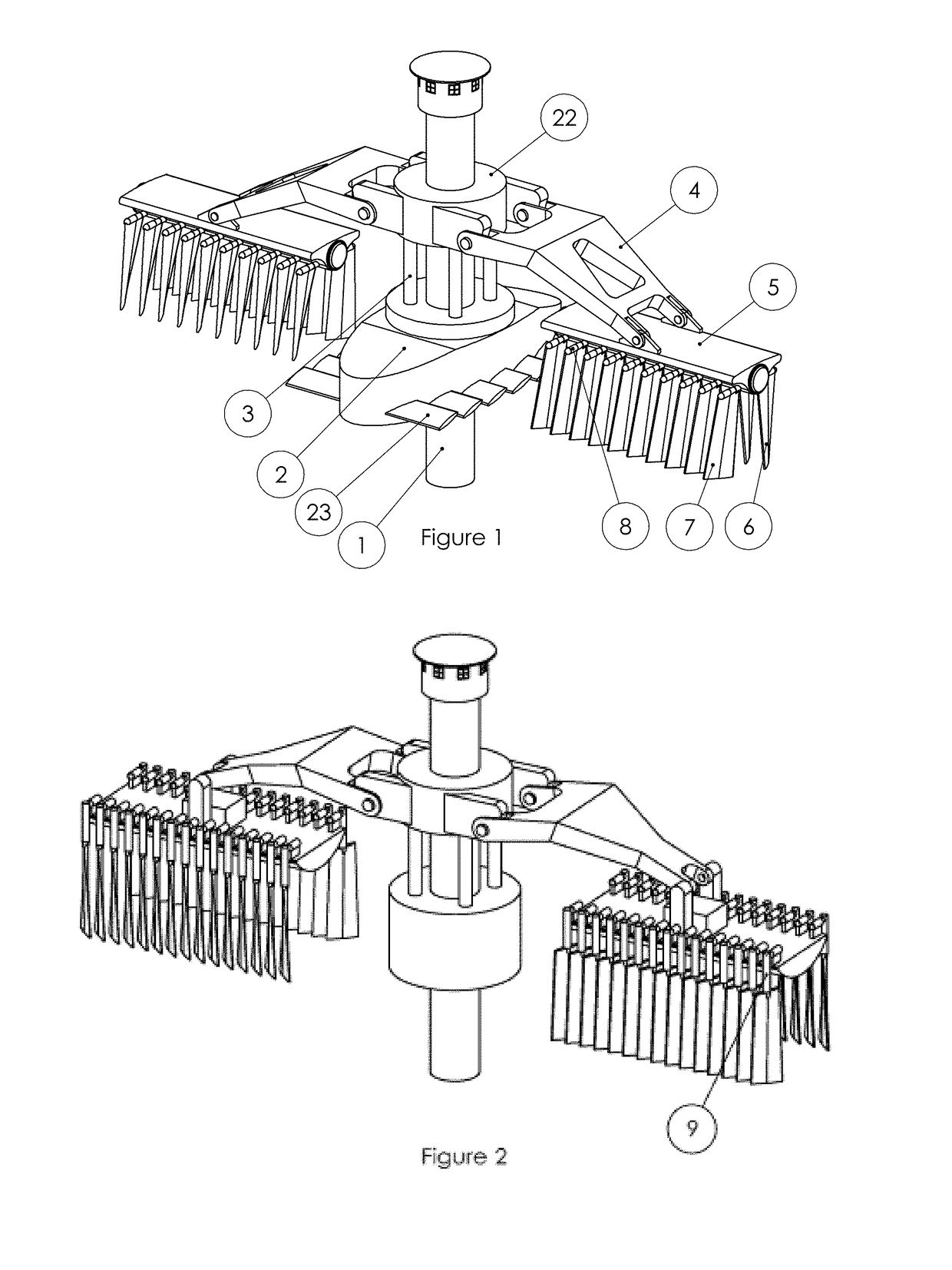Hybrid energy plant
a hybrid energy and energy plant technology, applied in water-power plants, machines/engines, electric generator control, etc., can solve the problems of increasing the unit cost of produced energy, the energy of both types is not captured in an efficient manner, and the prior art technology is not optimized for capturing energy of both types simultaneously. , to achieve the effect of preventing overload, limiting buoyancy, and preventing overload
- Summary
- Abstract
- Description
- Claims
- Application Information
AI Technical Summary
Benefits of technology
Problems solved by technology
Method used
Image
Examples
Embodiment Construction
[0056]The presented figures are not to scale, and component dimensions naturally vary according to requirements in different applications.
[0057]FIG. 1 illustrates an exemplary embodiment of a energy plant according to the invention. The plant captures potential energy from waves with wave floats 5, which follow the water surface height changes caused by waves. Connected to the floats, the plant has wing arrays 6 and 7 for capturing kinetic energy from waves, tidal or other streams or from combination of them.
[0058]The plant has a supporting column 1 around which the tidal compensation float slides and rotates. The tidal compensation float consists of partly or totally submerged part 2, connecting part 3, and upper part 22. The connecting part3 has small waterline area to minimize buoyancy changes due to waves thus keeping the compensation float on steady height. Arms 4 hold the floats 5 and wing arrays 6 and 7. Wings are connected to the floats with wing hubs 8. The supporting colum...
PUM
 Login to View More
Login to View More Abstract
Description
Claims
Application Information
 Login to View More
Login to View More - R&D
- Intellectual Property
- Life Sciences
- Materials
- Tech Scout
- Unparalleled Data Quality
- Higher Quality Content
- 60% Fewer Hallucinations
Browse by: Latest US Patents, China's latest patents, Technical Efficacy Thesaurus, Application Domain, Technology Topic, Popular Technical Reports.
© 2025 PatSnap. All rights reserved.Legal|Privacy policy|Modern Slavery Act Transparency Statement|Sitemap|About US| Contact US: help@patsnap.com



